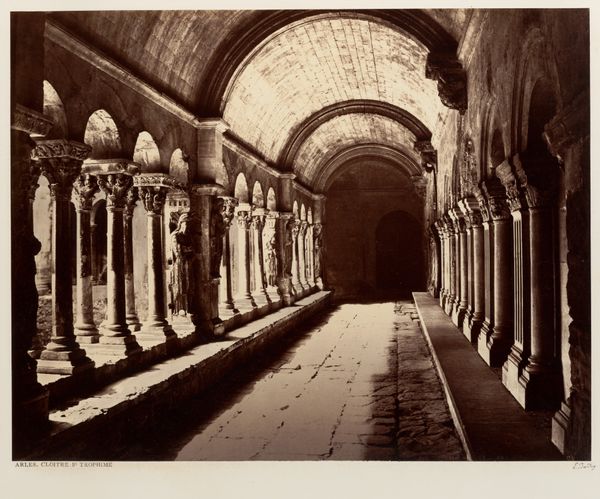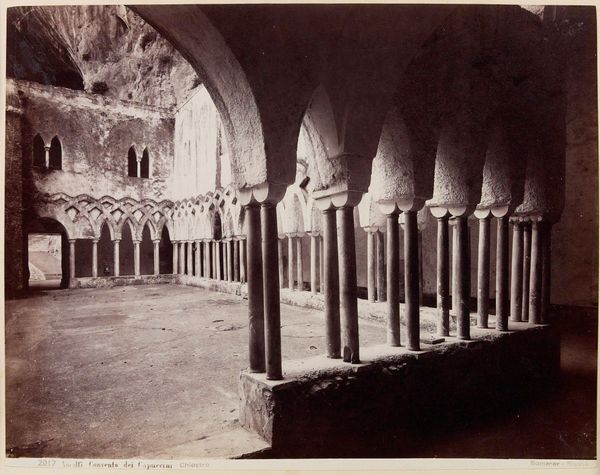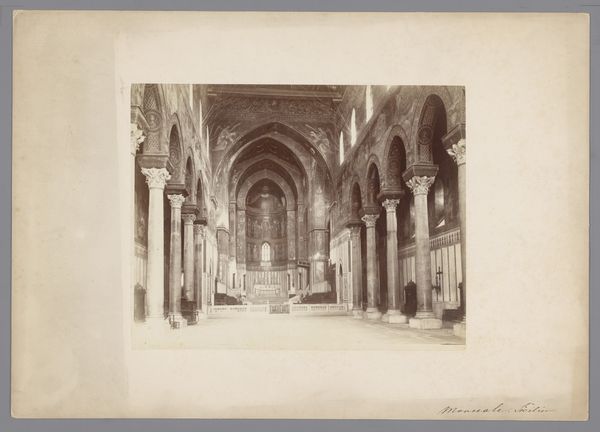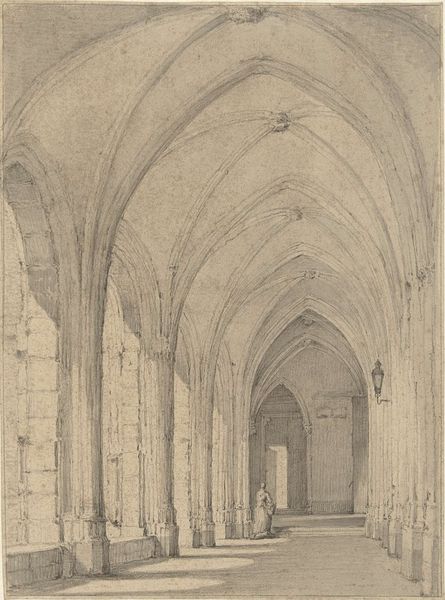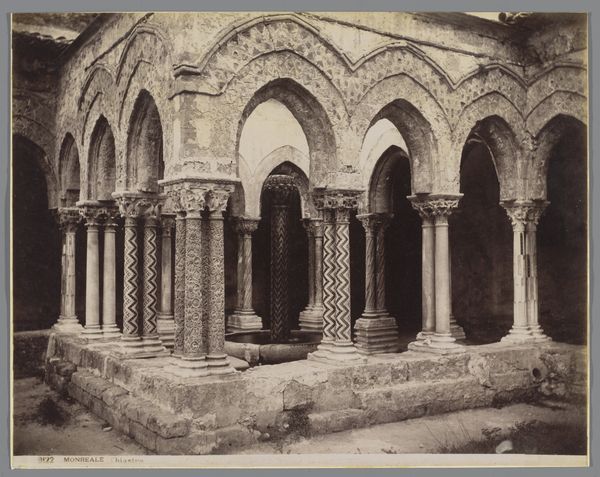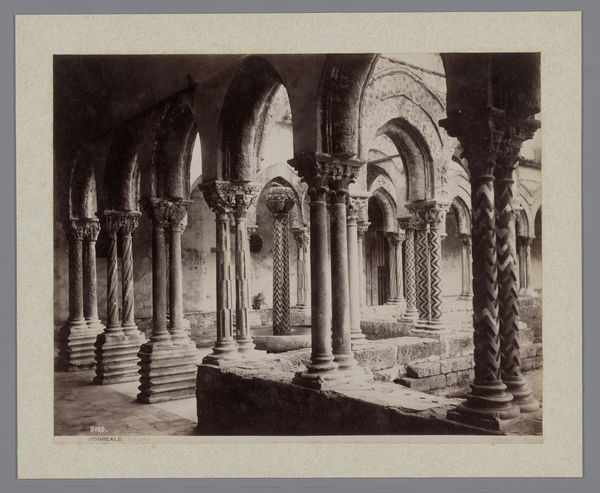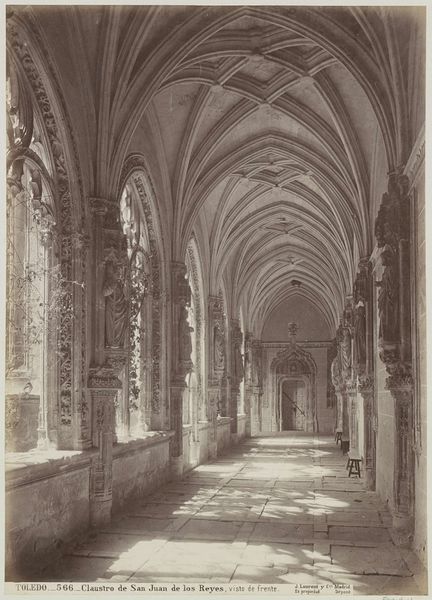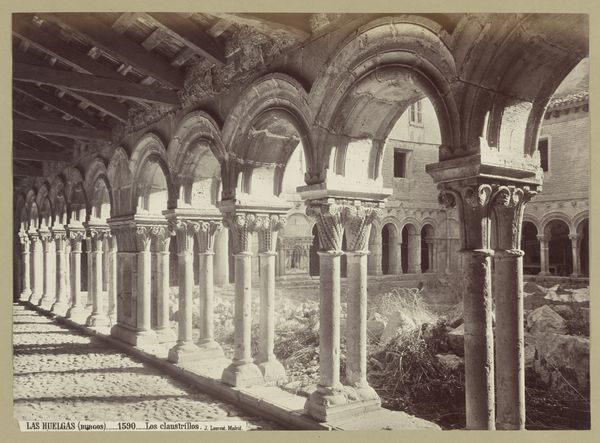
photography, gelatin-silver-print
#
statue
#
medieval
#
landscape
#
photography
#
romanesque
#
historical photography
#
gelatin-silver-print
#
19th century
#
statue
Dimensions: height 235 mm, width 270 mm, height 271 mm, width 481 mm
Copyright: Rijks Museum: Open Domain
Editor: This photograph captures the "Kloostergang van de Saint-Trophime in Arles," taken between 1863 and 1865. It’s a gelatin-silver print. There’s something very somber and powerful about the repeated arches and statues lining the cloister. What strikes you when you look at it? Curator: I'm immediately drawn to the masterful handling of light and shadow. Note how the photographer uses chiaroscuro to emphasize the architectural forms—the robust columns, the rounded arches, and the textured stone floor. The gradations create depth and enhance the Romanesque structure's inherent monumentality. Editor: It’s interesting how the play of light emphasizes certain areas and obscures others, leading your eye through the composition. Curator: Precisely. The arrangement of the pillars and arches creates a strong linear perspective, drawing the viewer into the depths of the cloister. And observe how the texture of the stone is rendered – it’s not merely representational, but becomes a crucial element in articulating space and form. Notice also the repetition, almost rhythmic, but each pillar is just slightly different in terms of light. Editor: Do you think the somewhat muted tones of the gelatin-silver print enhance this formal quality? Curator: Without question. The limited tonal range focuses our attention on form and texture. It eliminates any distraction from colour, thereby foregrounding the pure geometry and the intricate detailing of the capitals and sculptures. The very materiality of the gelatin-silver print contributes to our reading, offering us a tactile, sensory encounter with history. It allows for close inspection and a deeper connection. Editor: I now see how crucial the structural components are in conveying the image’s meaning and power. Thanks for that analysis! Curator: Indeed. It highlights how much we can appreciate when we look carefully at line, form, texture, and light.
Comments
No comments
Be the first to comment and join the conversation on the ultimate creative platform.
